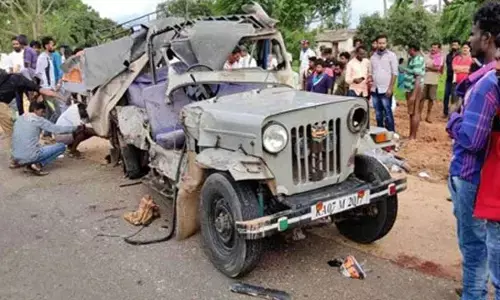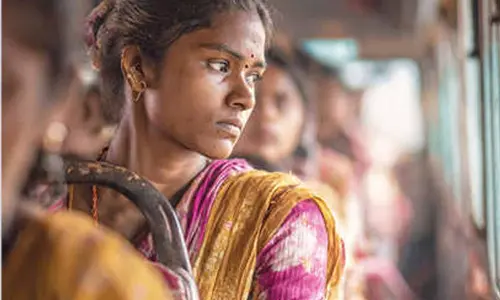Enable PSBs to take prudent decisions

It was in July 1969 then Prime Minister of India, Mrs Indira Gandhi promulgated an ordinance nationalising 14 major national banks with deposits of more than 50 crores.
It was in July 1969 then Prime Minister of India, Mrs Indira Gandhi promulgated an ordinance nationalising 14 major national banks with deposits of more than 50 crores.
This was followed up a decade later in 1980 with nationalisation of six more banks thus bringing the banking sector fully under government control. More than any other structural reform implemented in independent India bank nationalisation had the maximum impact on the economy both positive and negative. 50 years is good enough a period to analyse the impact of this major economic reform.
That it paid rich political dividends to Mrs Gandhi in 1971 general elections is beyond doubt. This one singular action of her ensured her coming back to power with a thumping majority along with the slogan of 'garibi hatao'. There were genuine expectations in rural India that with this one measure people would get access to loaning facility.
The expectations to some extent got fulfilled with expansion of rural banking network post- nationalisation of banks. The banking network which was less than 10,000 at the time of nationalisation went on to add another one lakh branches substantial portion in the rural areas.
In terms of lending to agriculture sector which has only 2 per cent of the total lending of the banks before nationalisation reached 16 per cent by 1989.
Expansion of the banking network also played an important role in increasing the gross domestic savings as a percentage of national income. Banks became important partners in all rural development programmes of the government though most of the schemes were so devised with a host of government institutions playing a part role in implementation of these programs requiring a lot of coordination at the ground level.
This led to the emergence of professional political pairavikars. The targeted approach for implementation of some of these programmes and the targets for the priority sector lending led to crippling of the finances of the banks.
By 90s bank loan waivers became the political agenda of the regimes bringing in an element of financial indiscipline on the part of the borrowers throwing to winds prudential norms of conventional banking.
But worse was yet to come. By the next decade of 2000 the politicians and the businessmen entrepreneurs had discovered golden geese in the nationalised banks. PSU banks funding to questionable companies with dubious credentials became the order of the day .
There were rumours that the posts of the chairman and MD of PSU banks was going to the highest bidder and the boards of the public sector banks had become centres of political patronage.
In the 1980s when I was joint collector in a district the local MLA was on the board of an important public sector bank. Whether he had any professional competence to add to the board was highly questionable.
In 2009 when I was in the VIP lounge of the Lucknow airport a person came and introduced himself as party worker in Amethi constituency and director on the board of an important PSU Bank. From an MLA with no professional competence in 1980 as an ordinary party worker to a board director of a PSU bank in 2009 was total destruction of whatever little professionalism was there in these financial institutions.
I know a savvy professional fixer in Hyderabad who had the right contacts to get people on to the boards of the banks and take their help to get through his proposals for financing his shell companies. With this type of an environment to function collapse of the public sector banks was only to be expected sooner or later.
What individual branch managers of the banks could not do to damage the financial health of the PSU banks, the boards collectively have done by lending to companies with dubious credentials.
Would things have been better if the banks were not nationalised? May not be. Between 1947 to 55 there were 316 instances of private sector bank failures depositors losing their life savings.
At least there is a sovereign guarantee of the government behind the public sector banks giving confidence to public to save with these banks. The way Global Trust Bank collapsed putting the liabilities on the head of the government shows in a badly regulated economy the damage private banks can do is much worse than that of the public sector banks. Recent happenings in the Yes Bank do not instill confidence in the public about the reliability of these players in the private sector.
The financial inclusion on a massive scale through the JAM Trinity would not have been a possibility without the strong public sector banking network built over the last half a century.
With the entry of the private banks post liberalisation and the premium commanded by some of the better functioning private sector banks is putting extra pressure on the functioning of the public sector banks. The strength of the public sector banks is their expanded branch network. What is missing is a professional approach.
If the government can provide an environment for them to be professionally managed I am sure they can live up to the challenges posed by the private players and continue to play an important role in the Indian economy.
For the present the responsibility of Government of India is to recapitalise these PSU banks adequately for the sins committed by political bureaucratic businessman nexus in the past and establish an environment for them to take the financially prudent decisions.
(Writer is former Chief Secretary, Government of Andhra Pradesh)




















